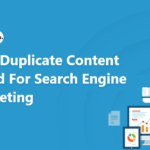As we approach the end of the year, we’ve seen the abundance of technology-powered trends take precedence. By next year, content marketing is predicted to lean towards a multi-modal ecosystem. This shows the importance of optimizing voice, visual, and platform-specific approaches for brands to be on top of the competition.
For brands to stay on top of the competition, an emerging strategy to invest in is artificial intelligence (AI) technologies. Used as a guide, AI can help create experiences that each consumer can relate to. A recent HubSpot survey found that 71% of marketers acknowledge that AI is crucial in enhancing customer personalization, significantly improving overall engagement and satisfaction.
This significant strategic shift in an ever-competitive landscape can leave your business high or dry. Learning to leverage AI tools for your specific needs is vital for success. This article will explore different AI-elevated content marketing ideas your business can use to stay ahead of the creative curve.
Emerging Content Marketing Trends for 2025
With 2025 being a few months away, the content marketing landscape is evolving rapidly. Some major trends that are steadily gaining momentum include:
- As one of the most influential technological innovations, AI technology deeply embeds itself in content marketing. With 80% of marketing experts utilizing AI in their campaigns today, its impact is projected to only increase to 107.5 billion by 2028.
- Leveraging interactive content in emails to landing pages is necessary. From polls to quizzes, keeping your target market engaged leads to many benefits. Specifically, this includes higher retention rates, according to marketers worldwide.
- To create effective campaigns, personalizing tailor-fitting content for different consumers is necessary. A 2020 Adobe survey found that 89% of marketers see a greater ROI through content personalization.
Generic and traditional formulaic content shouldn’t be your standard for 2025. With a market seeking a simple but high-quality experience, innovative content marketing ideas should be your business’s top approach. In this article, we’ll discuss content marketing ideas to inspire your next campaigns.
13 Innovative Content Marketing Ideas
-
AI-Powered Content Ideation
AI-powered technology is being spotlighted as one of the top content marketing tools. Transforming the way content is strategized, AI tools like ChatGPT and Jasper can serve as guides to support human creativity during the ideation stage. These tools are trained on current algorithms and datasets, making them useful in identifying trends.
By using human creativity and AI as an assistant, brands can create personalized consumer experiences. This collaborative approach improves their marketing campaigns’ effectiveness. The same study found that 95% of marketing companies using AI in content creation say their AI-empowered strategy is more effective than those who opted for traditional methods.
In a similar fashion, The Washington Post is continually using Heliograf in its editorial process. The AI generates stories that are refined by journalists based on real-time information for sports and election articles.
-
Interactive Content Experiences (Quizzes, Polls, Interactive Videos)
From quizzes and polls to videos, creating an interactive experience for your marketing campaigns is all the rage now. These content forms invite participation from your audiences. It is also a great way to gather consumer preference data subtly. It has the potential to be fun, engaging, and relatable.
A famous company that uses interactive content is Buzzfeed. Their quizzes have been shared countless times, reporting a 96% click-to-finish rate.
-
Personalized Content with Dynamic Email Marketing
Marketers like you can benefit from dynamic email marketing to tailor email campaigns for each individual based on their preferences and behaviors. By using this, you can increase engagement and sales and improve customer experience and click-through rates.
A well-known beauty brand, Sephora, has successfully implemented this strategy in their emails. Customers receive emails based on their purchase history, preferences, and behavior. Using AI-empowered data, they can send out recommendations, special offers, and beauty tips that resonate on a personal level.
-
Short-Form Vertical Videos for Social Media
Social media is a great medium for selling products and services directly to consumers. As users spend more time on their phones, short-form vertical video content that is perfect for mobile viewing can help you reach your target consumers faster. Typically, these videos can go from 5 seconds to 2 minutes max. They’re excellent for grabbing attention and boosting brand visibility on basically any social media platform.
One of the brands that make the most noise on social media, especially TikTok, is Duolingo. They produce short videos that feature their mascot in comedic situations. One thing to note is how they always follow trends for more engagement and relatability.
-
User-Generated Content (UGC) Campaigns
A boom in UGC campaigns has grown steadily throughout the years. Brands can encourage their customers to use their voices by sharing their own reviews and experiences with the products/services they offer. This helps them build trust, as UGC is often perceived as authentic and relatable.
Coca-Cola’s “Share a Coke” campaign replaces the logo with popular names specific to each country. They encourage nurturing personal connections by inviting consumers to share the beverage with someone whose name is on the label. The campaign urges people to share photos of their name-bearing Coke bottle using the now-viral hashtag #ShareaCoke online.
-
Sustainability and Purpose-Driven Content
As social awareness grows among consumers, brands must align with their audiences’ values. Purpose-driven content highlighting sustainability and social responsibility promotes deeper connections, allowing for a more loyal consumer community.
Patagonia embodies this ethos. Driven by the mission to save our planet, they put environmental activism as a core value. Through initiatives such as “Worn Wear,” they have achieved a loyal, environmentally-conscious consumer base.
-
Podcasting and Audio Content
Podcasts have surged in popularity over the years through streaming platforms like Spotify. This format allows brands to connect with audiences that seek an engaging and informative audio experience.
The Growth Show by HubSpot features entrepreneurs and industry experts who offer their insights through a podcast interview format. This strategy allows HubSpot to build a stronger connection with its audience and expand its brand’s reach.
-
Content Repurposing Across Multiple Channels
Brands repurpose content to save time and resources, maximize value, and adapt to different formats and platforms.
Nike exemplifies this strategy by repurposing its dynamic marketing campaign. They transform campaigns into shorter video clips for TikTok and Instagram. Their UGC fosters brand loyalty. Their content is not only visually appealing but also search engine optimized.
-
Leveraging Data-Driven Storytelling
Creative, compelling narratives have a great potential to invoke emotions from viewers. This strategy helps in presenting products in a relatable way that resonates with audiences. If successful, they can cause their target consumers to take action.
Spotify has an end-of-the-year Wrapped campaign where personalized user insights are shown through data-driven storytelling. This visually engaging, narrative summary strategy has strengthened user engagement and boosted subscriptions.
-
Gamified Content
Fostering interaction in marketing efforts entertains users and engages them to participate more. Through challenges, polls, or rewards, they have something to look forward to.
Duolingo’s gamified content experience has enabled it to retain users and encourage new ones. Through streaks, XP, and reward systems, they have made learning languages more fun and satisfying.
-
Collaborations with Micro-Influencers
The rise of social media has enabled people to build their own success, growing audiences from thousands to hundreds of thousands. Brands tap into the power of these micro-influencers, collaborating with them to produce content and reach niche audiences.
Hers is a wellness brand grounded on women’s health issues, including skincare, hair care, and sexual health. They collaborated with micro-influencers for their acne treatment campaign launched in 2023. Because of this, they were able to reach millions of potential customers, boosting their visibility in an otherwise oversaturated beauty market.
-
Immersive AR/VR Experiences
Augmented Reality (AR) and Virtual Reality (VR) have continued to improve throughout recent years. These technologies put consumers in a digital environment to explore and engage with products. With the immersive experience both provide, it has become a game-changer for brands in their attempt to captivate their audiences.
IKEA Place uses AR and VR to make furniture shopping a breeze. This app scales products based on room dimensions, allowing people to experiment with what works best in their space. Customers can then place orders directly through their local IKEA website.
-
Community-Driven Content Platforms
Within the digital world, brands can have stronger connections with their consumer base. Tapping into this direct link would be beneficial in organically building lasting relationships. By nurturing belongingness on a community-wide scale, brands create a genuine ecosystem. This is a place where healthy conversations can take place, benefitting both the brand and its consumers.
The popular colorful building blocks company LEGO has successfully created a way to engage its fan community. By wanting to strengthen their connection with audiences, they made a community-driven platform. This is a place where users can submit their own ideas for new LEGO sets. Others can then vote for their potential favorites. The people working behind LEGO can then take the design and make that product a reality. In that way, they engage their audience and ensure that they already have a potential market.
Content Marketing Tools to Elevate Your Strategy
As we move closer to 2025, great ideas with subpar execution just won’t cut it. With more brands tapping into AI’s potential, staying relevant in the industry can be hard. This is where AI-powered content marketing tools come in handy as a solution.
Jasper, formerly known as Jarvis, is an AI tool that helps you create high-quality content in a span of minutes. Jasper can create high-quality copy for blog posts, social media, or ads based on the provided prompts. This efficient and consistent tool is a great assistant for generating fresh concepts.
Ranking high on search engines is crucial for brands to stay relevant. It is also essential to receive organic traffic. This all-in-one tool helps you optimize your content through specific keywords while tracking competitor strategies. Semrush improves your website’s search visibility and makes your content accessible to audiences.
High-quality content is important. Even more important is visually appealing, high-quality content. This is what makes Canva stand out from the competition. As a user-friendly design tool, Canva provides marketers with a drag-and-drop design interface. Users have access to numerous templates. This allows teams to collaborate within the platform to speed up the creation process.
Another valuable SEO tool, Ubersuggest has a wide range of features that help you elevate your content strategy. Some of its key features are keyword suggestions, idea generation, and backlink analysis. This budget-friendly tool is helpful in ensuring your brand stays on top of the trends.
AI powers this photo editing software, making background removal a breeze. This allows creatives to spend less time brushing out imperfections and more on providing polished visuals. Elevating your brand’s visual identity is key to riding the competitive creative waves.
Adding these to your professional toolkit elevates every part of your content marketing strategy. To remain competitive, don’t shy away from using AI-powered tools to craft and execute your best campaign yet.
Conclusion
Stay ahead of the curve by creating high-quality, visually appealing to capture audiences. Data-driven technologies ensure that your campaigns rank higher, convert, and build lasting connections, ensuring your brand’s longevity. By embracing these new ideas and emerging technologies, your brand stays relevant.
Now is the time to experiment and implement innovative approaches in your campaigns. Take action to set your brand apart and rely on practical tips and tools. Achieve better outcomes by finding what works best for your brand and your target audiences.






